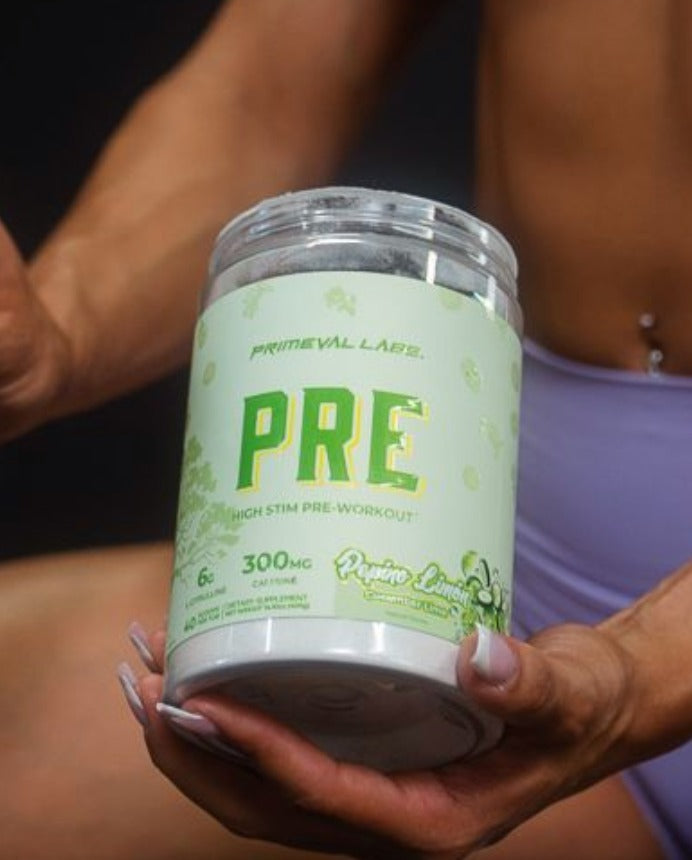The biceps curl is a core movement in just about every lifter’s training program. Its purpose is pretty simple -- to make the biceps bigger and stronger.
The curl appears to be exceedingly simple in its execution, yet many lifters struggle to experience significant growth from their biceps training.
Today, we review 7 bicep curl mistakes sabotaging your biceps growth.
Let’s get started.
Top 7 Biceps Curl Mistakes
Not Using a Complete Range of Motion
This might be the most common biceps training mistake we see lifters make -- using too little of a range of motion.
Sure, you can lift a lot more weight when half-repping your way through a set of biceps curls, but if you want to maximize the stimulus your muscles receive, then you need to use a complete range of motion -- all the way up and all the way down.
Using a full range of motion allows you to place a stretch on the muscle while it’s under tension (which stimulates muscle growth) and allows for a peak contraction.
Yes, you’ll most likely have to use less weight when performing curls through a complete range of motion, but that’s ok...your goal is to maximally stimulate the muscle, not see how much weight you can lift by convulsing and contorting your whole body.
The reduced (more appropriate) load also spares undue stress on other parts of your body (lower back).
Not Controlling the Eccentric
After not using a complete range of motion, the next most common mistake lifters make is not controlling the eccentric phase (lowering) of the curl.
Instead of resisting the pull of gravity and lowering the weight under control, many lifters simply allow gravity to do all of the work and pull the weight straight down.
By not controlling the eccentric, you’re losing out on some major opportunities for growth as eccentric contractions significantly contribute to muscle growth.
When you don’t control the eccentric, you might be able to do more concentric reps, but there’s no prize for completing the most concentric reps in the gym. Your goal is to stimulate the biceps as effectively as possible.
It’s also worth noting that when you allow the weight to drop down, you’re allowing for the possibility of a ton of stress being placed on your elbows and shoulders.
To do this, you need to treat the eccentric phase of the lift with as much care as you do the concentric.
Now, during the eccentric, you don’t need to go super slow or make it last 5-10 seconds or anything like that. Just control the weight’s descent and resist gravity from pulling it straight down from the point of peak contraction.
Swinging the Weight Up (Using Momentum)
Another incredibly common mistake that lifters across the globe make is using momentum to swing the weights up instead of using the biceps to curl the weight up to their shoulders.
Why do people use momentum to swing the weight up?
To move more weight and inflate their ego.
Swinging the weight up and using momentum does little to overload the biceps. It recruits a whole lot of other muscles that aren’t intended to be trained by the exercise.
Ask yourself this: “What is the purpose for doing curls?”
The answer should be: “To train the biceps and make them bigger and stronger.”
Therefore, it makes little sense to use momentum to swing the weights up when that effectively reduces the amount of work the biceps are actually doing.
Drop the ego lifting and select a weight that you can lift using only the biceps -- not your entire posterior chain.
Not Using a Consistent Range of Motion
This biceps curling mistake is an extension of the first mistake we detailed -- not using a full range of motion.
Similar to using an incomplete range of motion, not using a consistent range of motion when performing curls (or any other exercise for that matter) makes it difficult to accurately track how many quality reps you’re actually completing.
For example, you might write down in your training log that you completed 8 reps on a dumbbell curl, but if the first 4 were full range of motion and the last four reps were some cross of half reps and ¾ reps, you really didn’t do a legitimate 8 reps on the exercise.
Sure, you might feel good about writing that “8” down in your log book, but you can’t accurately track your progress or performance if you’re using inconsistent ranges of motion during the exercise. It also makes it difficult to implement overload the next time you hit biceps as you can’t really be sure how many reps were actually done.
Having a consistent range of motion and using good technique on every rep of an exercise allows you to be accurate when tracking progression and knowing whether or not you’ve successfully created progressive overload on the muscle from one week to the next.
Not Maintaining a Consistent Torso Angle
Building upon the previous point, you also need to maintain a consistent torso position when performing curls.
Some people prefer to maintain a rigid, upright posture, while others prefer an ever so slight forward lean.
Regardless of which position feels best for you, keep consistent across all sets of a particular exercise.
The reason is simple -- the ability to accurately track progress and know that you’ve actually implemented progressive overload.
If you’re completely upright for the first set, and then hinge at the hips to create a more elbows-forward position, you’re effectively changing the angle at which you’re working the biceps.
Both are completely fine and effective ways to work the biceps, but they are two separate approaches to the curl (i.e. two different exercise variations).
As such, maintain consistency from one set to the next.
Write in your training log “curls -- upright posture” and then for your next biceps exercise, write “curls -- hinged”. This way you know how many reps you’ve completed with a given weight depending on which exercise variation you are performing.
Going to Too Heavy or Too Light
This mistake falls into the “what’s the best rep range” category of training dogma.
Basically, if you’re doing 5 reps or less, or 30+ reps on a curl, your weight selection is off.
What that means is that anything in the 6-30 rep range is fine for providing sufficient stimulus to grow the biceps.
Now, the caveat here is that some individuals do not respond well to low rep isolation exercises -- it beats up their wrists, shoulders, or elbows.
If that’s you, train in a more moderate rep range (8-12, 10-15, 15-20, etc).
There is no “perfect” rep range for all individuals. So long
Find the rep range in which the biceps are receiving maximal amounts of tension and are the cause of failure, not the wrists, forearms, elbows, etc.
Only you will know which rep range works best for you, and which exercises respond best to which rep range in which you’re working.
Maybe sets of 8-10 on the barbell curl leave your wrists and elbows hurting for days, but sets of 12-15 don’t bother them and you get a ton of tension in your biceps.
That’s totally fine.
Find a rep range that works best with a given exercise and focus on adding reps and weight over the coming weeks.
Grip Width
We’re all built differently, and as such no two lifters may use the same grip width or setup when performing a curl. This mistake is mostly related to barbell and EZ bar curls.
You may have heard things like you should place your hands at “x” position on the bar to maximally stimulate them.
Well, the truth is, the only one who knows which position feels right for your anatomy is YOU.
Don’t worry how wide or narrow somebody else’s grip on the barbell curl is. Find a set up and grip width that doesn’t irritate your elbows or shoulders and DOES allow you to maximize the mind-muscle connection.
You might not even like using the barbell curl. Perhaps you like an EZ bar or dumbbell variation better. That’s totally fine.
Again, don’t get locked into the dogma of “having” to use a certain grip set up because some guru or IFBB pro told you to.
Find the set up that is most friendly to your anatomy and allows you to stimulate the biceps effectively.














Leave a comment
This site is protected by hCaptcha and the hCaptcha Privacy Policy and Terms of Service apply.